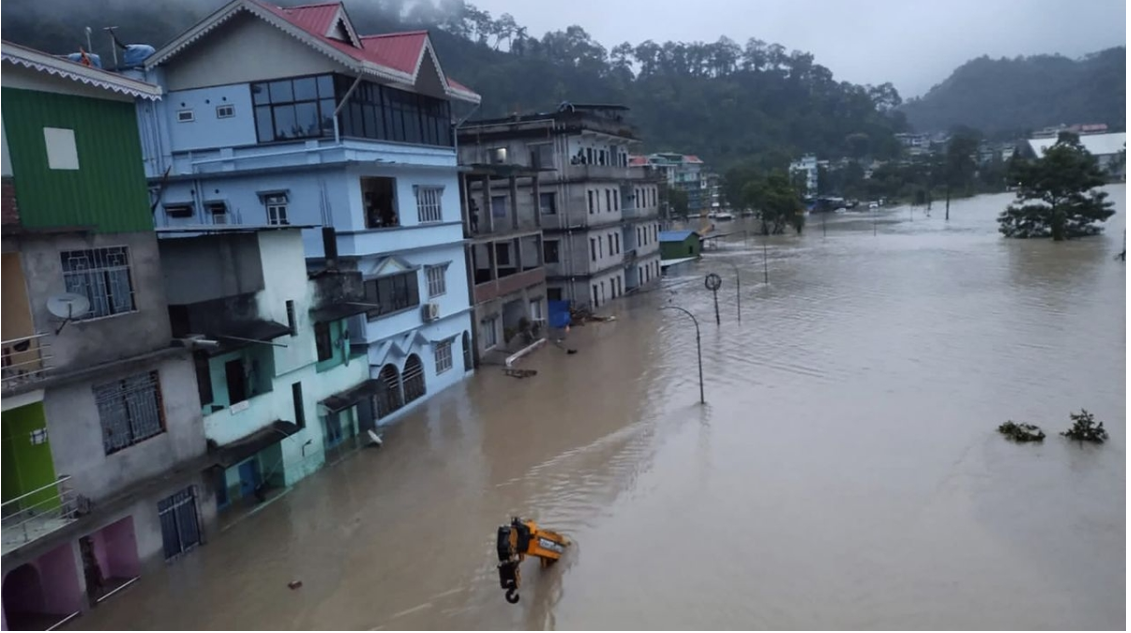Introduction
In a devastating turn of events, the serene state of Sikkim has been struck by a catastrophic flash flood, resulting in a rising death toll and numerous individuals, including army personnel, reported missing. As the rescue and relief operations continue to unfold, it is imperative to shed light on the circumstances surrounding this calamity and the efforts underway to mitigate its impact.

The Flash Flood Disaster
The flash floods, triggered by heavy rainfall, have wreaked havoc across various parts of Sikkim, with the death toll steadily rising to 14 individuals. Furthermore, the fate of 102 people, including 22 army personnel, remains uncertain as they are still reported missing. This catastrophe has not only led to the loss of lives but has also caused significant damage to infrastructure, including roads and bridges, exacerbating the challenges faced by rescue teams.
The Role of Natural Factors
Sikkim’s geographical location in the eastern Himalayas exposes it to a unique set of climatic conditions, including heavy monsoon rainfall. The hilly terrain of the state exacerbates the impact of such heavy rainfall, leading to landslides and flash floods. Climate change-induced variations in weather patterns also contribute to the unpredictability of such events, emphasizing the importance of preparedness and resilience.
The Rescue and Relief Efforts
In response to the crisis, both state and central agencies have mobilized their resources to conduct extensive search and rescue operations. The Indian Army, Border Roads Organization (BRO), and National Disaster Response Force (NDRF) have been actively involved in locating the missing individuals, providing medical aid to the injured, and restoring critical infrastructure.
The challenges faced by rescue teams are manifold, including adverse weather conditions, difficult terrain, and the need for precise coordination to ensure effective and efficient operations. The collaboration between various agencies and the dedication of rescue personnel have been instrumental in addressing the crisis.
A Call for Preparedness
The flash floods in Sikkim serve as a stark reminder of the vulnerability of regions prone to such natural disasters. While immediate relief efforts are commendable, there is a pressing need for proactive measures to enhance preparedness and reduce the risk of future disasters. This includes investments in early warning systems, improved infrastructure resilience, and public awareness campaigns to educate residents about safety measures during adverse weather conditions.
Conclusion
The flash floods in Sikkim have brought forth the resilience of its people and the dedication of rescue and relief agencies in the face of adversity. As the search for missing individuals continues and rehabilitation efforts begin, the nation stands in solidarity with Sikkim during this challenging time. It is incumbent upon us to not only address the immediate crisis but also to learn from this tragedy, reinforcing the importance of disaster preparedness and mitigation in regions prone to natural disasters.